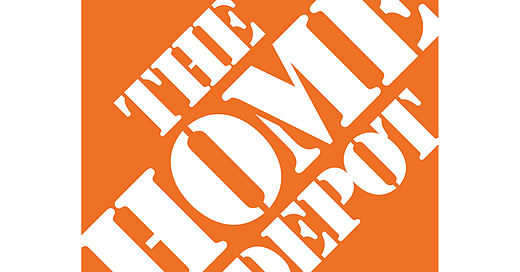Subscribe to AGB - One analysis of a good business every two weeks.
The Home Depot
Home Depot is the largest home improvement retailer serving customers in the U.S., Canada and Mexico. A typical store averages 100k in sq. ft. with an additional 25k in an outside garden area. These are massive retail locations that house more than 35k SKUs and over 1M SKUs are available online. The company employs almost 500k associates, most of which are part time hourly workers.
Home Depot operates almost 2,300 stores, a number that’s increased only 0.2% annually over the past 8 years. Because the company isn’t increasing its retail footprint by much or doing many relocations, the average store is over 20 years old while the company is just 43 years old. Interestingly over the past decade, Home Depot has grown its sales almost all through efficiency gains from its existing stores, while expanding its supply chain/distribution network and its online business. So in contrast to the lack of retail square f…




